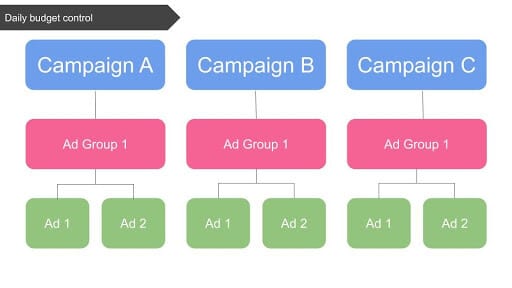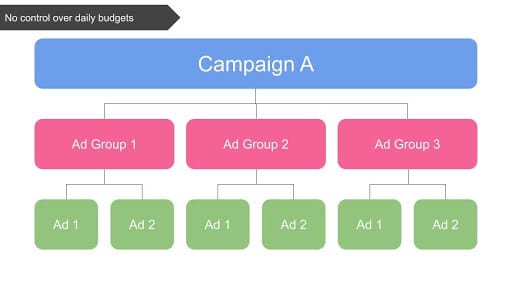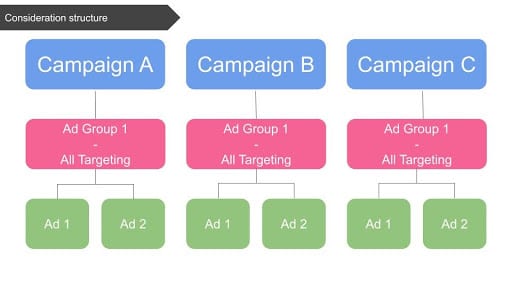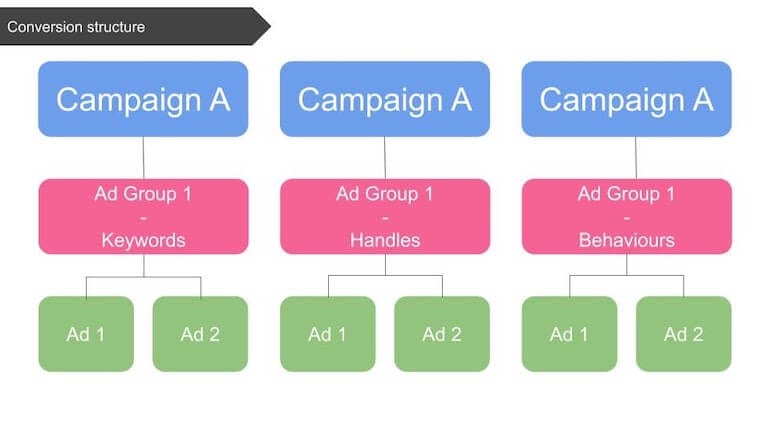In their 2019 review, Twitter stated that on average their platform holds 139 million monetizable daily active users. Combine this with a 20% rise in engagement rate year on year and it’s a recipe for success in reaching your target audience.
If you want to utilize what Twitter can do for you and maximize your investment in the platform, read on.
Campaigns: Awareness, consideration, or conversion?
When you create a new campaign, you will be faced with three core objectives: Awareness, consideration, and conversion. Given that Twitter is identified as the #1 platform for discovery, generating awareness is their greatest strength so bear this in mind when planning your campaign.
Here are your options:
- Awareness
- Reach: Show your tweets to users that match your targeted audience
- Consideration:
- Video Views: Encourages users to view your videos
- Pre-roll views: Show your ads on premium content
- Followers: Encourage users to follow your Twitter page
- App installs: Download your app
- Clicks: Direct users off Twitter
- Tweet engagements: Encourage users to interact with your tweets
- Conversion
- App Engagement: Encourage users to interact with your app
If your conversion action isn’t an app engagement, you can opt for ‘consideration – clicks’ to direct users to the page in which they can convert.
Ad Groups: The More the Merrier?
The number of ad groups you have predominantly comes down to budgeting: Do you want to control daily spend on each audience? You can only set daily budgets at the campaign level and not at the ad group level.
If yes, you want to control how much each audience spends daily, then opt for one ad group per campaign. This will give you full control over audience spend.

If no, you don’t mind how budget is allocated amongst your various audiences, then you can combine all ad groups into one campaign.

Targeting: Linking the Funnel
With over 350 pre-set interests, demographics, keyword targeting, and more to choose from, it’s important to structure your campaign and its ad groups in a way that best suits your chosen objective.
Combined targeting
Combined targeting is where you apply multiple targeting methods, such as keywords and handles, and it is a great way to expand your audience pool. This is because it creates an ‘OR’ function whereby you’re allowing a user to match an interest or a keyword.
With that, combined targeting is a great option for awareness and consideration campaigns whereby you want to reach a wider audience.
The following is recommended as a minimum:
- 5 interests
- 50 handles
- 100 keywords
- 3 to 5 events
- 3 conversation topics

Segmented Targeting: Conversion focused
Alternatively, you have the option of segmented targeting. Segmented targeting is where you will have different ad groups using different targeting methods. As an example, you could have one ad group targeting only keywords, a second only targeting handles, and another only targeting behaviors.

What’s the point in segmented targeting? It’s useful if you want to target users who are at a specific stage in the conversion funnel. Conversation topics, events, and interests are all higher funnel targeting methods whereby users are in the discovery phase, whilst targeting handles and keywords will reach those who are typically lower in the funnel.
A caveat with this method is that your audience pool will not be as broad and well-rounded as if you were to go with combined targeting. However, if you are interested in testing this structure and seeing where your spend goes then this is a good option.
The Battle of the Audiences
Regardless of whether you opt for combined targeting or segmented targeting, audience overlap will cause a battle.
If there is a large overlap between your audiences, whether they are in the same campaign or separate campaigns, the ad groups will be fighting against each other at auction. This disrupts the delivery of your ads by increasing competition and in return, increasing cost.
With that in mind, we recommend the following:
- Apply negatives
- Use custom audiences or keywords to negate other audiences
- Narrow your targeting
- Applying demographic filtering to your audience will create an ‘AND’ function whereby the user must meet the demographic filter AND your handles/keywords/interests and so forth.
Ads: Tweet, tweet, and tweet again
Unlike ad groups whereby you might want to segment them individually, tweets are best used in multiples. Below are some best practice tips for your tweet structure.
- Aim to have 3 – 10 tweets per ad group
- Mix up the ad formats and test them
- Experiment with video and static
- Refresh your ads approximately every 4 weeks to maintain ad relevancy
- A/B test your ad copy
Summary
If you only take one thing away from this, let it be the importance of planning. Plan your campaign carefully and thoroughly to ensure you are maximizing its potential to perform.
In my experience of using the platform, I have found it to be most beneficial for consideration and awareness objectives. Alongside this, combined targeting is superior to segmented targeting and negating is key for driving performance!
Go forth, plan, and have fun!



